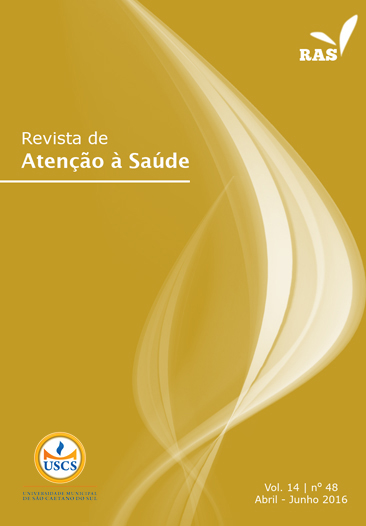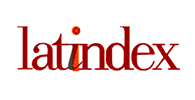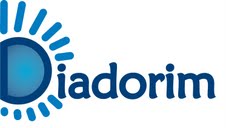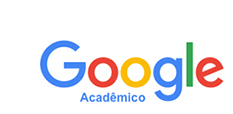Binge drinking and illicit drug use among high school students
DOI:
https://doi.org/10.13037/ras.vol14n48.3544Keywords:
adolescent, adolescent behavior, binge drinking, illicit drugsAbstract
Introduction: Binge drinking impairs judgment capacity and can lead to illicit drugs use among adolescents. Objectives: Investigate the association between binge drinking and use of illicit drugs (marijuana, cocaine and inhalants) among high school students. Materials and Methods: Cross-sectional study with 175 students, from both genders, enrolled in public high school in a two-stage cluster sampling, drawing schools and classes, respectively. Data were collected in April 2014 in five schools, using the validated Portuguese version of the Youth Risk Behavior Survey. Modules were used on alcohol consumption, use of marijuana and other drugs. Descriptive and inferential analyses were carried out with frequencies distribution, using chi-square test. Results: Most of the students were female (56.7%), aged 16-19 years (70.2%), regularly enrolled students (80.7%) and with family income above minimum wage (54.3%). Binge drinking, inhalants and cocaine use showed no significant difference between the sexes (p>0.05), unlike marijuana use, which was higher on boys (p<0.05). All drug use patterns were associated with binge drinking. Conclusion: The practice of binge drinking among adolescents was associated with marijuana use, as well as cocaine and inhalants.
Downloads
References
Laranjeira R, Madruga CS, Pinsky I, Caetano R, Mitsuhiro SS. II Levantamento Nacional de Álcool e Drogas no Brasil (LENAD) – 2012. São Paulo: Instituto Nacional de Ciência e Tecnologia para Políticas Públicas de Álcool e Outras Drogas (INPAD), UNIFESP; 2014 [acesso em 2014 Dez 06]. Disponível em: http://inpad.org.br/wp-content/uploads/2014/03/Lenad-II-Relat%C3%B3rio.pdf
Sánchez AS, Martín SR, Vicário MIG, Miranda AV. Episodios de urgencia hospitalaria relacionados com el consumo de alcohol em personas de entre 10 y 30 años de edad en Castilla y León durante el período 2003-2010. Rev Esp Salud Pública. 2012;86(4):409-17.
Cisler JM, Begle AM, Amstadter AB, Resnick HS, Danielson CK, Saunders BE. Exposure to interpersonal violence and risk for PTSD, depression, delinquency, and binge drinking among adolescents: data from the NSA-R. J Trauma Stress. 2012;25(1):33-40.
Birdsall WC, Reed BG, Huq SS, Wheeler L, Rush S. Alcohol-impaired driving: average quantity consumed and frequency of drinking do matter. Traffic Inj Prev. 2012;13(1):24-30.
Lisdahl KM, Thayer R, Squeglia LM, McQueeny TM, Tapert SF. Recent binge drinking predicts smaller cerebellar volumes in adolescents. Psychiatry Res. 2013;211(1):17-23.
López-Caneda E, Mota N, Crego A, Velasquez T, Holguín SR, Corral M, et al. Anomalías neurocognitivas asociadas al consumo intensivo de alcohol (binge drinking) en jóvenes y adolescentes: una revisión. Adicciones. 2014;26(4):334-59.
Romano M, Duailibi S, Pinsky I, Laranjeira R. Pesquisa de compra de bebidas alcoólicas por adolescentes em duas cidades do estado de São Paulo. Rev Saúde Pública. 2007;41(4):495-501.
Degenhardt L, Dierker L, Chiu WT, Medina-Mora ME, Neumark Y, Sampson N, et al. Evaluating the drug use “gateway” theory using cross-national data: consistency and associations of the order of initiation of drug use among participants in the WHO World Mental Health Surveys. Drug Alcohol Depend. 2010;108(1-2):84-97.
Bava S, Frank LR, McQueeny T, Schweinsburg BC, Schweinsburg AD, Tapert SF. Altered white matter microstructure in adolescent substance users. Psychiatry Res. 2009;173(3):228-37.
Degenhardt L, Ferrari AJ, Calabria B, Hall WD, Norman RE, McGrath J, et al. The global epidemiology and contribution of cannabis use and dependence to the global burden of disease: results from the GBD 2010 study. PLos ONE. 2013;8(10):e76635.
Haberstick BC, Young SE, Zeiger JS, Lessem JM, Hewitt JK, Hopfer CJ. Prevalence and correlates of alcohol and cannabis use disorders in the United States: results from the national longitudinal study of adolescent health. Drug Alcohol Depend. 2014;136:158-61.
Santos S, Brugal MT, Barrio G, Castellano Y, Domingo-Salvany A, Espelt A, et al. Assessing the effect of patterns of cocaine and alcohol use on the risk of adverse acute cocaine intoxication. Drug Alcohol Rev. 2012;31(4):439-46.
Degenhardt L, Hall W. Extent of illicit drug use and dependence, and their contribution to the global burden of disease. Lancet. 2012;379(9810):55-70.
Guedes DP, Lopes CC. Validação da versão brasileira do Youth Risk Behavior Survey 2007. Rev Saúde Pública. 2010;44(5):840-50.
Kann L, Kinchen S, Shanklin SL, Flint KH, Hawkins J, Harris WA. Youth Risk Behavior Surveillance – United States, 2013. MMWR CDC surveill summ [periódico na internet]. 2014 Jun [acesso 2014 Set 10];63(SS04):1-168. Disponível em: http://www.cdc.gov/mmwr/pdf/ss/ss6304.pdf.
Sanchez ZM, Locatelli DP, Noto AR, Martins SS. Binge drinking among Brazilian students: a gradient of association with socioeconomic status in five geo-economic regions. Drug Alcohol Depend. 2013;127(1-3):87-93.
Miller JW, Naimi TS, Brewer RD, Jones SE. Binge drinking and associated health risk behaviors among high school students. Pediatrics. 2007;119(1):76-85.
Carlini ELA, editor, Noto AR, Sanchez ZVDM, Carlini CMA, Locatelli DP, Abeid LR, et al. VI Levantamento sobre o consumo de drogas psicotrópicas entre estudantes do ensino das redes pública e privada de ensino nas 27 capitais brasileiras – 2010. São Paulo: Centro Brasileiro de Informações sobre Drogas Psicotrópicas (CEBRID); 2010 [acesso em 2015 Fev 18]. Disponível em: http://www.cebrid.epm.br/index.php.
Silva-Oliveira F, Jorge KO, Ferreira EF, Vale MP, Kawachi I, Zarzar PM. The prevalence of inhalant use and associated factors among adolescents in Belo Horizonte, Brazil. Cien Saude Colet. 2014;19(3):881-90.
Meneses C, Markez I, Romo N, Uroz J, Rua A, Laespada T. Diferencias de género en el consumo diario de tabaco e intensivo de alcohol en adolescentes latinoamericanos en tres areas españolas (Andalucia, Madrid y País Vasco). Rev Asoc Esp Neuropsiquiatr. 2013;33(119):525-35.
Locatelli D, Sanchez Z, Opaleye E, Carlini C, Noto A. Socieconomic influences on alcohol use patterns among private school students in São Paulo. Rev Bras Psiquiatr. 2012;34(2):193-200.
Harakeh Z, de Looze ME, Schrijvers CTM, van Dorsselaer SA, Vollebergh WA. Individual and environmental predictors of health risk behaviours among Dutch adolescents: the HBSC study. Public Health. 2012;126(7):566-73.
Stickley A, Koyanagi A, Koposov R, McKee M, Roberts B, Murphy A et al. Binge drinking among adolescents in Russia: prevalence, risk and protective factors. Addict Behav. 2013;38(4):1988-95.
Patrick ME, Schulenberg JE, Martz ME, Maggs JL, O’Malley PM, Johnston LD. Extreme binge drinking among 12th-grade students in the United States: prevalence and predictors. JAMA Pediatr. 2013;167(11):1019-25.
Harris DS, Everhart ET, Mendelson J, Jones RT. The pharmacology of cocaethylene in humans following cocaine and ethanol administration. Drug Alcohol Depend. 2003;72(2):169-82.
Downloads
Published
Issue
Section
License
Policy Proposal for Journals offering Free Delayed Access
Authors who publish in this magazine agree to the following terms:
- Authors maintain the copyright and grant the journal the right to the first publication, with the work simultaneously licensed under a Creative Commons Attribution License after publication, allowing the sharing of the work with recognition of the authorship of the work and initial publication in this journal.
- Authors are authorized to assume additional contracts separately, for non-exclusive distribution of the version of the work published in this magazine (eg, publishing in institutional repository or as a book chapter), with the acknowledgment of the authorship and initial publication in this journal.
- Authors are allowed and encouraged to publish and distribute their work online (eg in institutional repositories or on their personal page) at any point before or during the editorial process, as this can generate productive changes, as well as increase impact and citation of the published work (See The Effect of Open Access).









